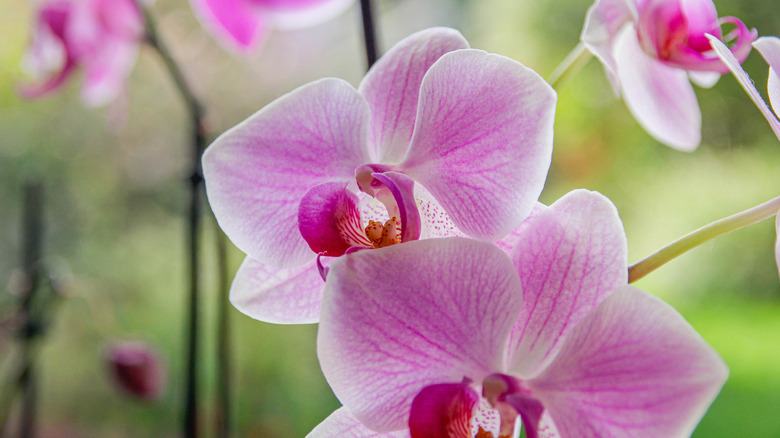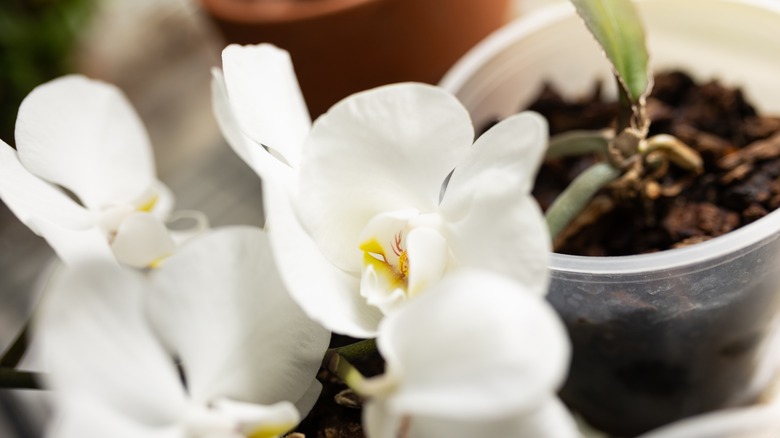The Best Type Of Flower Pot For Growing Happy, Healthy Orchids
Orchids (Orchidaceae) are beautiful flowers that can be intimidating to keep as indoor houseplants because they require specific care that makes them different from any other plant in your home. The American Orchid Society notes there are around 28,000 different orchid species dating back to the time of the dinosaurs, so there are plenty from which to choose. While these flowers have stood the test of time, the key to keeping your new addition happy is to learn how to successfully care for your indoor orchid, starting with just the right orchid flower pot. Usually, orchids come in a clear plastic container sitting in another decorative pot. You might even be tempted to throw the insert away. Don't! If it has drainage holes, that clear pot could be the best place for your orchid to thrive.
The biggest concern when choosing the perfect pot for your orchid is that the roots do not stay wet. Soggy roots will be the death of your orchid, so you want a container that will drain and allow air to reach the plant's roots. To that end, it might be best to pick a clear pot so you can keep an eye on your orchid's roots — that's how important they are. In fact, one of the most common mistakes that is sure to kill your orchid is neglecting that part of your plant. That said, plastic isn't your only choice.
Another choice for your orchid
While clear plastic makes for the best orchid flower pots, terra cotta is also an option. This porous material allows air to flow to the orchid's roots, typically has at least one drainage hole at the bottom, is sturdy, and inexpensive. The biggest problem with terra cotta is that it doesn't allow you to view the plant's roots or let sunlight in. Still, you could drill holes in the sides of the pot to take care of that problem or simply buy one with side holes already present.
If you opt for clear plastic but don't like the look of exposed roots, using a decorative container is an option, but you'll have to take an extra step in watering your orchid. Since decorative pots don't usually have drainage holes, you'll have to remove your orchid (in its plastic container) to give it water, allowing it to drain completely before returning it to its home. That will also give the orchid's roots an opportunity to absorb the light they need to stay healthy.
Whichever you decide, be sure that the pot is only a little bigger than the one your orchid currently lives in. Too little or too much space can cause problems for its roots. Note that choosing the right pot will directly affect your plant's longevity. How long does an indoor orchid live if cared for properly? While the answer depends on the species, some orchids can live forever.

